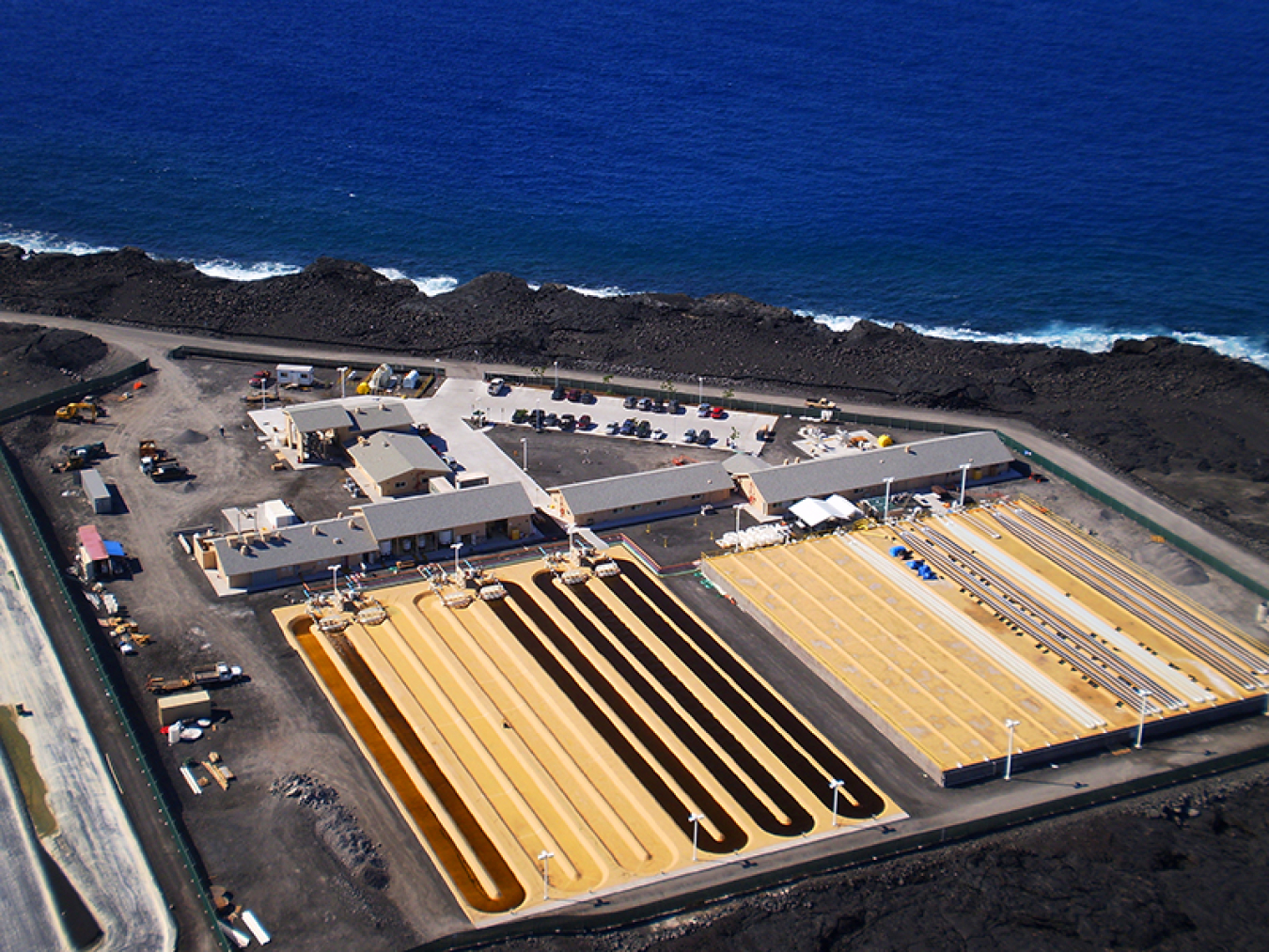
Cellana Inc.’s Kona Demonstration Facility is working to increase yields of algal biofuel feedstock.
Algae are an attractive biofuel feedstock because they grow fast, absorb carbon dioxide, and can utilize waste resources, such as municipal waste water. Algae store energy from sunlight and can then be converted to advanced hydrocarbon fuel and used as a direct replacement for petroleum fuel. However, the current costs associated with producing, handling, and converting algal oil to fuel can make a gallon of algal biofuel very expensive.
To help cut those costs, the Energy Department announced this week a funding opportunity of up to $25 million to help improve the economics of making biofuel from algae. These cooperative agreements will support the development of a bioeconomy that can help create green jobs, spur innovation, improve the environment, and achieve national energy security. This is the first funding opportunity to focus specifically on developing algal biofuel co-products—such as animal feeds, specialty chemicals, or polymers. The production of high-value co-products can help off-set the costs of producing commodity fuels, adhering to the business model of the petroleum industry, which uses the “whole barrel of oil” to produce not just fuel, but also products, including plastic bags, clothing, and lubricants. Incorporating co-products makes the entire production process more profitable.
The funding opportunity builds on recent accomplishments from EERE’s Bioenergy Technologies Office (BETO) to overcome the barriers to creating cost-effective algal biofuels. In celebration, we’re highlighting five of our most exciting, recent accomplishments:
- Four algae projects that were announced for funding last year have started work in California, Hawaii, and New Mexico. These projects each are receiving from $1.5 million to $5 million from the Energy Department and are aimed at boosting the productivity of algae as a way to reduce cost. Funding allowed the selection of an additional project in July—Hawaii-based Cellana Inc.’s algae feedstock production system. These projects will receiving funding through to 2016 and are helping BETO reach its 2018 yield goal of 2,500 gallons of algal feedstock.
- In June, Neste Oil—the world’s largest producer of renewable diesel—agreed to purchase algae crude oil from Renewable Algal Energy, LLC, a microalgae products company that received Energy Department funding. RAE first proved the viability of its algal oil harvesting and extraction technologies with Energy Department funds, which helped the company to secure the off-take agreement with Neste Oil. This means RAE has its first customer, which is big step toward commercialization for its algal biofuels.
- The Cornell Consortium, which received Energy Department funding starting in 2010, has made significant progress to improve algal productivity in designing a commercial-scale upstream algae cultivation and harvesting process. This year, the Cornell Consortium reached BETO’s milestone of improvement in algal productivity, increasing yield to 1,500 gallons of algal feedstock per acre per year.
- The National Alliance of Advanced Biofuels and Bioproducts released its close-out report, which details a combination of research advancements that together have the potential to reduce the cost of algae-based biofuels to $7.50 per gallon gasoline equivalent. These advancements include discovery and improvement of strains of algae that grow more quickly and have high lipid content, designing a higher-efficiency filtration system for harvesting algae from open pond systems, and developing a hydrothermal liquefaction conversion process. The 39-institution consortium received $50 million in funding from the American Recovery and Reinvestment Act of 2009, and the report culminates three years of research. This investment has established a new generation of algae researchers and catalyzed the development of valuable intellectual property across the supply chain.
- Two reports from Pacific Northwest National Laboratory and the National Renewable Energy Laboratory, funded by the Energy Department, helped work toward the goals to reduce costs by clarifying what the greatest challenges are, using detailed modeled design scenarios. These design scenarios are the whole algae hydrothermal liquefaction technology pathway and the algal lipid extraction and upgrading technology pathway. While the focus of the reports was on the process improvements of the conversion pathways, analyses showed that cultivating algae accounts for the highest portion of the cost. Cultivation costs can be reduced by improving biomass yield (also a focus of the new funding opportunity).
Through these and continuing efforts, the Energy Department is working toward the goal of reducing the cost of algal biofuels to $3 per gallon gasoline equivalent by 2030. This new funding opportunity is just part of a promising future for algae. Learn more about algal biofuels through this short video, “Bioenergy: America’s Energy Future,” and through the newly updated Algal Biofuels fact sheet.
For more information on the Bioenergy Technologies Office, visit the BETO website.
